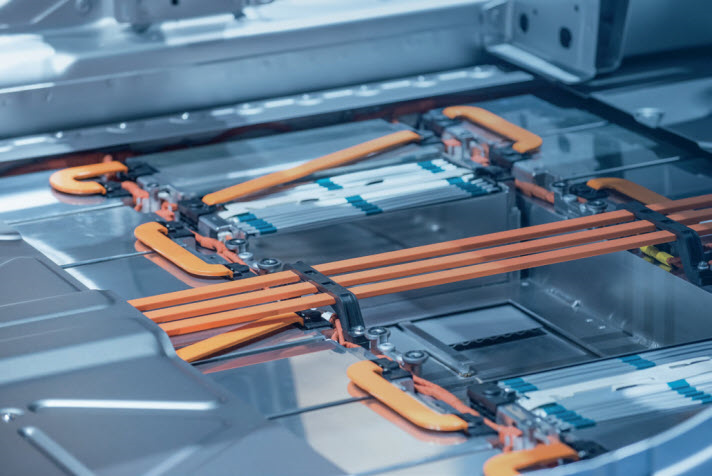


A Laminated Flexible Busbar is a highly advanced electrical component used to transfer electrical power with maximum efficiency and safety. It is made by laminating multiple layers of conductive materials such as copper or aluminum, which are then insulated for protection. The layers are arranged in a flexible configuration, allowing the busbar to bend and fit into complex or tight spaces, making it ideal for installations where conventional rigid busbars would not work. Laminated Flexible Busbars are designed to handle high current and voltage applications while providing excellent reliability, durability, and electrical performance.
The manufacturing process of Laminated Flexible Busbars involves several crucial steps to ensure the highest performance and safety standards:
1.Material Selection: The process starts by choosing high-quality materials such as copper or aluminum for their excellent electrical conductivity. Copper is especially used for its superior current-carrying capability and reliability.
2.Lamination of Conductive Layers: Multiple thin layers of copper or aluminum are laminated together. This step involves stacking and bonding the layers using a specific adhesive or mechanical process to ensure a strong, uniform structure.
3.Insulation Application: After the conductive layers are laminated, an insulating layer is applied over the busbar to prevent electrical contact. Common insulation materials include PVC, silicone rubber, or cross-linked polyethylene, which provide a robust dielectric barrier and protect against environmental factors.
4.Assembly: The laminated flexible busbar is then shaped and arranged to fit the required configuration. The flexible nature of the busbar allows it to be bent or formed into complex shapes for specific installations, such as in high-density power systems or renewable energy setups.
5.Testing and Quality Control: Before finalizing the product, Laminated Flexible Busbars undergo rigorous testing. This includes electrical testing for current-carrying capacity, mechanical testing for flexibility and durability, and environmental testing for resistance to factors like heat, humidity, and UV exposure.
6.Cutting and Packaging: Once tested, the laminated flexible busbar is cut to the required length and packaged for shipment, ready for use in a variety of electrical applications.
1.High Current Capacity: Laminated Flexible Busbars offer excellent current-carrying capabilities due to their multi-layer structure, which increases the surface area for power transmission, resulting in minimal energy loss.
2.Flexibility: As with other flexible busbars, the laminated design allows for superior flexibility, enabling installation in tight or constrained spaces. This makes it ideal for use in complex electrical systems.
3.Durability and Reliability: The laminated construction enhances the Laminated Flexible Busbar's mechanical strength, allowing it to withstand bending, vibration, and other physical stresses while maintaining its performance over time.
4.Compact and Space-Efficient: These busbars are space-saving due to their flexible nature and thin profile. They allow for a cleaner, more organized electrical layout, especially in areas with limited space.
5.High Insulation Resistance: The insulating layers used in Laminated Flexible Busbars ensure that the busbar remains safe to use, preventing electrical shorts and offering high dielectric strength, even in harsh environments.
6.Customization: Laminated Flexible Busbars can be customized in terms of layer thickness, insulation material, current rating, and length, allowing them to meet specific application needs.
 Laminated Flexible Busbars are used in a wide range of applications that require both flexibility and high electrical performance, including:
Laminated Flexible Busbars are used in a wide range of applications that require both flexibility and high electrical performance, including:
1.Power Distribution: In industrial and commercial power systems, laminated flexible busbars are used to interconnect power sources, breakers, and distribution points, providing reliable and efficient energy distribution.
2.Renewable Energy Systems: These busbars are ideal for use in solar power systems, wind turbines, and other renewable energy setups, where flexibility and space efficiency are essential.
3.Electric Vehicles (EV): In EVs, Laminated Flexible Busbars are used to connect high-voltage components such as batteries, motors, and power electronics, ensuring safe and efficient power transfer between them.
4.Industrial Automation: In manufacturing facilities and automated production lines, laminated flexible busbars are used for power distribution to machines, robots, and other automation equipment.
5.Data Centers: These busbars are ideal for high-density power distribution in data centers, where efficient and reliable power delivery is crucial for maintaining uptime and operational continuity.
6.Uninterruptible Power Supply (UPS) Systems: Used in UPS systems, Laminated Flexible Busbars help ensure that power is continuously supplied to critical equipment, even in the event of an electrical outage.
7.Electric Substations: These busbars are used in substations for efficient high-voltage power distribution, ensuring that electrical energy is properly routed to different parts of the grid.
Designing a Laminated Flexible Busbar involves considering several key parameters to ensure optimal performance, flexibility, and safety:
1.Current and Voltage Requirements: The busbar must be sized based on the current it needs to carry and the voltage level it will operate at. Properly sizing the Laminated Flexible Busbar ensures minimal power loss and safe operation.
2.Layer Construction: The number of layers and thickness of the copper or aluminum strips must be designed to support the required electrical load. More layers can increase the busbar’s capacity, but this must be balanced with the need for flexibility and space constraints.
3.Insulation Material Selection: The insulation material must be chosen based on the voltage, environmental conditions, and flexibility requirements. Materials like PVC, silicone, or cross-linked polyethylene are often used, each providing different levels of temperature resistance and mechanical properties.
4.Mechanical Strength: The Laminated Flexible Busbar must be designed to endure mechanical stresses such as bending and vibration without losing its structural integrity. The lamination process enhances its mechanical strength, allowing it to withstand these stresses.
5.Temperature Resistance: The insulation and conductors must be able to handle the operating temperature of the system. This is especially important in high-power applications, where heat generation is a concern.
6.Safety Standards: Compliance with international safety standards, such as UL, IEC, or CE, is critical in ensuring that the Laminated Flexible Busbar performs safely in various applications. The design should include safety features to prevent short circuits, electrical shocks, and fire hazards.